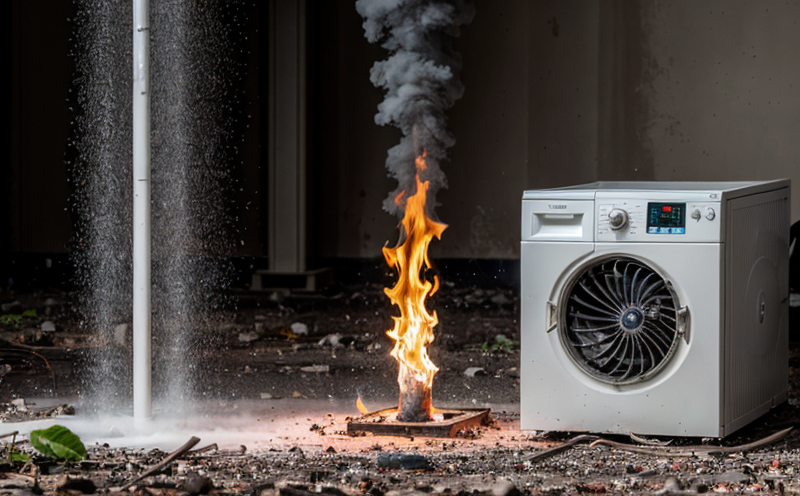IEC 62928 Environmental Stress Testing of Railway Vehicle Battery Systems
The International Electrotechnical Commission (IEC) publication IEC 62928 provides comprehensive guidelines for the environmental stress testing of railway vehicle battery systems. This standard is crucial in ensuring that batteries meet stringent operational and safety requirements, especially under extreme environmental conditions such as heat, cold, humidity, and altitude variations.
The railway industry relies heavily on reliable power sources to support critical operations like traction motors, signal systems, emergency lighting, and communication networks. Battery failures can lead to significant disruptions in service, increased maintenance costs, and potential safety hazards. IEC 62928 addresses these challenges by offering a standardized approach to testing that helps manufacturers and operators identify weaknesses early on.
The standard covers various types of batteries commonly used in railway applications, including lithium-ion (Li-ion), nickel-metal hydride (NiMH), and lead-acid. It specifies test methods for evaluating the performance of these batteries under different environmental stress conditions. These tests are essential because they simulate real-world scenarios where the battery might be subjected to harsh environments.
Some key aspects tested include:
- Temperature cycling between extreme temperatures (e.g., -40°C and +85°C)
- Humidity exposure up to 93% relative humidity
- Vibration testing at various frequencies and amplitudes
- Altitude simulation to assess battery performance at high elevations
The goal of IEC 62928 is not only to ensure that batteries function correctly but also to provide data on how they degrade over time in adverse conditions. This information allows manufacturers to improve their designs and extend the lifespan of railway vehicle batteries.
For quality managers, compliance officers, R&D engineers, and procurement professionals involved in the railway sector, understanding IEC 62928 is vital for ensuring that your organization meets all relevant regulatory requirements while maintaining high product standards. By adhering to this standard, you can enhance the reliability and safety of battery systems used within railway vehicles.
In summary, IEC 62928 plays a pivotal role in safeguarding the integrity and performance of railway vehicle batteries through rigorous environmental stress testing. It ensures that these critical components remain dependable under challenging operational conditions, thereby contributing to safer and more efficient rail transportation systems worldwide.
Why It Matters
The importance of IEC 62928 cannot be overstated in the context of railway vehicle battery systems. These batteries are integral to ensuring smooth operations across various aspects of rail transport, including propulsion, signaling, lighting, and communication. Any failure can have far-reaching implications, ranging from operational disruptions to safety hazards.
By subjecting batteries to environmental stress testing according to IEC 62928, manufacturers gain valuable insights into how their products behave under extreme conditions. This knowledge allows them to refine designs and enhance durability, ultimately leading to more reliable and safer vehicles. For operators, compliance with this standard ensures that they meet regulatory requirements while delivering consistent performance levels.
The standard also fosters innovation by encouraging continuous improvement in battery technology. As the railway industry evolves, so too must its power sources. Through rigorous testing protocols outlined in IEC 62928, companies can push boundaries and develop cutting-edge solutions that meet future demands.
In addition to enhancing reliability and safety, compliance with this standard contributes positively to environmental sustainability efforts within the rail sector. By reducing waste associated with premature failures due to harsh environments, organizations contribute towards a greener transport ecosystem.
Overall, adherence to IEC 62928 is essential for maintaining trust among stakeholders—be it passengers, regulators, or investors—who depend on dependable and environmentally responsible railway systems.
Industry Applications
- Traction Motors: Ensures consistent power supply to drive electric trains efficiently under various environmental conditions.
- Signal Systems: Maintains uninterrupted communication between different segments of the railway network, even in adverse weather situations.
- Emergency Lighting: Provides essential illumination during emergencies or power outages, ensuring passenger safety and operational continuity.
- Communication Networks: Supports seamless data transmission among various components of a rail system, enhancing overall connectivity and coordination.
Battery systems tested according to IEC 62928 play a crucial role in these applications by providing dependable power sources that can withstand harsh environmental conditions. This ensures that railway vehicles remain operational regardless of external factors like temperature fluctuations or humidity levels.
Why Choose This Test?
Selecting IEC 62928 for your battery testing needs offers numerous advantages that set it apart from other testing methods. Firstly, it provides a standardized approach to evaluating the performance of railway vehicle batteries across different environments. This consistency ensures that results are reliable and comparable, making it easier for manufacturers and operators to make informed decisions.
Secondly, this standard covers multiple types of batteries widely used in the industry today, ensuring comprehensive coverage. Whether you're dealing with Li-ion, NiMH, or lead-acid batteries, IEC 62928 offers a versatile framework that caters to diverse applications within the railway sector.
Thirdly, by adhering to this standard, organizations demonstrate their commitment to quality and safety standards recognized globally. This can enhance credibility among stakeholders, including passengers, regulators, and investors who rely on dependable rail transport systems.
In addition to these benefits, IEC 62928 also supports innovation by encouraging continuous improvement in battery technology. The rigorous testing protocols outlined in this standard push boundaries and promote the development of next-generation solutions that meet future demands.
Lastly, compliance with this standard contributes positively towards environmental sustainability efforts within the rail sector. By reducing waste associated with premature failures due to harsh environments, organizations contribute towards a greener transport ecosystem.
In conclusion, choosing IEC 62928 for your battery testing needs ensures that you receive reliable and consistent results across different types of batteries and environments. It sets a benchmark for quality and safety standards recognized globally while supporting innovation and environmental responsibility within the railway industry.





